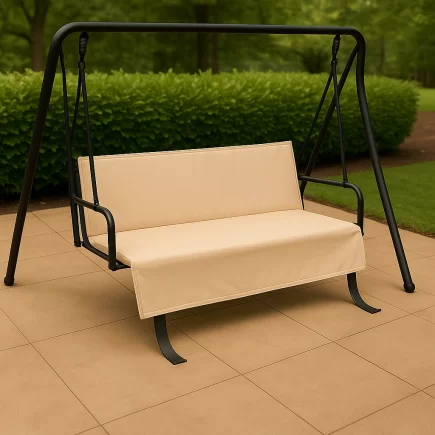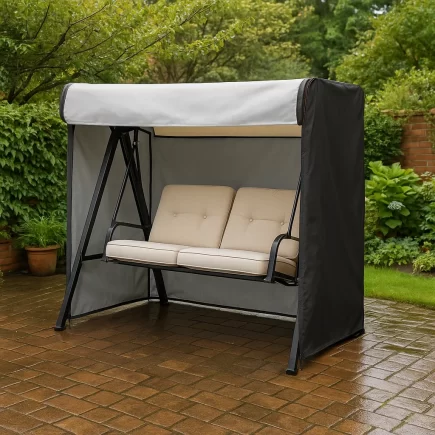Starting a fire in a fire pit may seem simple, but it requires the right approach to ensure it burns efficiently, safely, and with minimal hassle. Whether you’re trying to stay warm, cook food, or enjoy the natural ambiance, knowing how to start a fire properly can elevate your outdoor experience.

In this guide, we’ll cover the essential materials, fire-starting techniques, and safety tips to help you get the most out of your fire pit.
Materials You Will Need
Before you can light your fire, ensure you have the correct materials on hand. Having the right components makes the process smoother, safer, and more efficient.
| Material | Description |
| Tinder | The most flammable material in your fire-starting setup. It includes dry leaves, pine needles, small twigs, or fire starter bricks. Tinder catches fire easily and ignites the kindling that follows. |
| Kindling | Small dry twigs, branches, or small pieces of wood that burn fast enough to help the fire grow. Ensure the kindling is dry, as wet kindling won’t catch fire easily. |
| Firewood | Seasoned hardwood like oak, ash, or maple that burns longer, cleaner, and with minimal smoke. |
| Fire Starters | Matches, lighters, or an electric torch lighter help ignite the tinder. Avoid using chemical fire starters, as they can release harmful fumes. |
Step-by-Step Guide to Lighting the Fire
Now that your firewood is arranged and you’re ready to start the fire, follow these steps for a successful lighting:
Set Up the Tinder

Begin by placing your tinder in the center of the fire pit. If you’re using fire starter bricks, you can place them around the tinder to make lighting even easier.
Add Kindling

Arrange your kindling around the tinder in one of the structures outlined above (Teepee, Log-Cabin, or Cross-Stack). Ensure there’s enough space for air to circulate, which is crucial for the fire to catch and grow.
Light the Tinder

Use matches or a lighter to ignite the tinder. Be sure to light it from several sides to ensure even ignition. The kindling should start catching fire within minutes.
Add Firewood

Once the kindling is burning well, start adding your firewood logs. Gradually place them on top, ensuring there’s enough space between the logs for airflow. The fire should continue to grow as the logs catch and burn.
Fire Starting Techniques
There are two main methods for starting a fire in your fire pit: the Top-Down Method and the Traditional Bottom-Up Method. Each has its benefits, and the choice largely depends on personal preference and the type of fire you’re aiming to create.
Top-Down Method
The Top-Down Method is often preferred by experienced fire starters because it produces less smoke and results in a more efficient burn. The technique involves stacking your firewood from the top down, starting with the largest logs and working your way down to the smallest pieces.

Steps for the Top-Down Method
- Start by placing your largest firewood at the bottom of the fire pit.
- Layer smaller logs or kindling on top of the larger logs.
- Add your tinder at the very top of the pile.
- Light the tinder, and the fire will work its way down, igniting the kindling and firewood in the process.
This method is ideal for creating a steady, long-lasting fire with minimal effort. Once the fire is going, there’s very little maintenance required.
Traditional Bottom-Up Method
The Bottom-Up Method is the most traditional way to start a fire and is great for beginners. It involves starting with the smallest materials and building upwards.

Steps for the Bottom-Up Method
- Place a small pile of tinder at the base of the fire pit.
- Stack kindling around the tinder in a crisscross fashion, creating a small pyramid.
- Add firewood on top of the kindling, ensuring there’s enough air circulation for the fire to grow.
- Light the tinder, and the fire will gradually move upward, catching the kindling and then the firewood.
- This method takes more attention and maintenance, but it’s effective for creating a fire that burns from the bottom up.
Fire Pit Structures
The way you arrange the wood in your fire pit plays a key role in ensuring the fire burns efficiently. The structure of your fire can promote better airflow, which is essential for a consistent burn.
Teepee Structure
The Teepee Structure is one of the most common arrangements for a fire. This structure provides excellent airflow, allowing the fire to catch quickly and burn effectively.

Steps for the Teepee Structure
- Place your kindling vertically in the center of the fire pit, forming a cone shape.
- Leave a gap on one side to allow airflow.
- As the fire grows, the logs will collapse into the center, continuing the burn.
Log-Cabin Structure
The Log-Cabin Structure involves stacking logs in a square formation. This structure is great for long-lasting fires and provides consistent heat over time.

Steps for the Log-Cabin Structure
Place two larger logs parallel to each other at the base of the fire pit.
Stack two more logs perpendicular across the first two, creating a square formation.
Add kindling inside the log cabin and finish with tinder at the top.
This arrangement ensures even burning and is ideal for maintaining a consistent, long-lasting fire.
Cross-Stack Method
The Cross-Stack Method involves arranging logs in a crisscross pattern. This provides plenty of gaps for airflow, ensuring an even, steady burn.
Steps for the Cross-Stack Method
- Place a foundation of tinder and kindling in the center.
- Stack the firewood in a crisscross pattern, leaving enough space between the logs to allow air to circulate.
- Add more logs as the fire grows, maintaining the crisscross pattern.
This structure provides stability and ensures an efficient burn with minimal smoke.
Fire Pit Safety Tips
Fire pits are a fantastic way to enjoy the outdoors, but safety should always come first. Follow these essential precautions to ensure your fire is safe, controlled, and enjoyable for everyone.
| Safety Tip | Details |
| Keep a Safe Distance | Place your fire pit at least 3 metres away from buildings, fences, trees, or anything flammable. |
| Avoid Windy Days | Wind can cause embers to spread unexpectedly. Light fires only in calm or mild wind conditions. |
| Never Leave Unattended | Always supervise the fire, even if you’re just stepping away for a moment. |
| Have Extinguishing Tools Nearby | Keep a bucket of water, sand, or a fire extinguisher close at hand in case the fire gets out of control. |
| Avoid Flammable Liquids | Do not use petrol, lighter fluid, or other chemical accelerants to start or relight the fire. |
| Supervise Children and Pets | Ensure they stay at a safe distance and never allow them to play near the fire. |
| Extinguish Completely | Let the fire burn down, then douse the embers with water and stir until everything is completely cool. |
Maintaining the Fire
After your fire is up and running, it’s important to keep it going efficiently. This means adding more wood when necessary, adjusting the logs, and ensuring the fire continues to burn evenly.

| Maintenance Tip | Details |
| Gradually Add Logs | Only add logs when the current ones are burning well. Add 1 or 2 logs at a time for good airflow. |
| Use a Poker | Stir the coals and adjust the logs using a long, heat-resistant poker to maintain the fire’s intensity. |
Efficient Fuel Use
Using the right amount and type of fuel is essential for getting the most out of your fire. Efficient fuel use can help you save money on firewood, reduce smoke, and make sure your fire lasts longer without needing constant replenishment.
| Fuel Tip | Details |
| Choose the Right Type of Wood | Hardwoods like oak, ash, maple, and hickory are best for long-lasting fires. Avoid softwoods like pine or fir. |
| Season Your Wood | Use seasoned wood (dried for 6-12 months) for efficient burning and less smoke. |
| Elevate the Wood for Airflow | Use a log grate to elevate the wood for better airflow, ensuring efficient combustion. |
Mastering the art of starting, maintaining, and managing your fire in a fire pit can transform your outdoor experience. With the right materials, techniques, and tools, you can enjoy a long-lasting, clean-burning fire with minimal effort. By choosing the right wood, using the proper fire-starting methods, and managing the logs effectively, you’ll ensure that your fire pit remains an efficient and enjoyable part of your outdoor setup.
FAQS
1.Why won’t my lighter or matches stay lit near the fire pit?
Wind can easily blow out small flames. Use a windproof lighter or light your tinder from a sheltered angle within the fire pit to protect the flame while starting the fire.
2.What should I do if I run out of kindling?
You can split larger logs into smaller pieces using a hatchet or use dry cardboard strips as a temporary substitute. Just avoid glossy or coated paper, which can release toxins.
3.How can I start a fire if the wood is slightly damp?
If your firewood is slightly damp, use extra dry kindling and tinder to create a hotter initial flame. You can also position the damp wood near the edge of the fire to dry it gradually before moving it into the centre.
4.Can I use coal or charcoal in a fire pit instead of wood?
Some fire pits are designed to handle charcoal or smokeless coal, but not all. Always check the manufacturer’s guidelines. If allowed, charcoal can burn hotter and longer—ideal for cooking.
5.What should I do if the fire keeps going out?
Your fire may lack airflow, dry fuel, or proper structure. Rebuild using a Teepee or Log-Cabin shape, ensure the wood is dry, and avoid smothering the flame with too many logs at once.





















